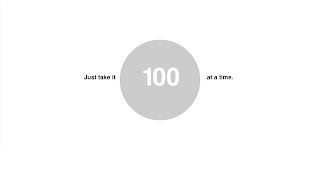Ansel Adams,
Moonrise Hernandes New Mexico 1941
Aspens
Before digital photography
Uses the same negative over and over to enhance the image
manipulates the image in the dark room
Pravda,
Russian news paper
one sided truth
Digital photography,
homegame.org/news/
similar to Adbusters
GQ magazine,
manipulating images in photoshop
Iraque war,
news paper manipulated and combined two images
Robert Capa,
Death of a loyalist soldier 1936
shows a soldier getting shot by a sniper
the moment of death
Persuaion into a certain way of thinking
Jean Baudrillard,
representation of the basic truth
masks and perverts
absence of basic reality
‘Whereas representation tries to absorb simulation by interpreting it as false
representation, simulation envelops the
whole edifice of representation as itself
a simulacrum. These would be the
succesive phases of the image:
1.It is the reflection of a basic reality.
2.It masks and perverts a basic reality.
3.It masks the absence of a basic reality.
4.It bears no relation to any reality whatever : it is its own pure simulacrum.’
Jean Baudrillard, Simulacra and Simulations, 1981, in Poster, M. (ed.) (1988), Jean Baudrillard: Selected Writings, Cambridge, Polity Press, page 173
Peter Turnley,
The unseen Gulf War
wasn't allowed to show them because of the shocking nature
‘As
we approach the likelihood of a new Gulf War, I have an idea and it occurs to
me that the Digital Journalist may be the place for it. As we all know, the
military pool system created then was meant to be, and was, a major impediment
for photojournalists in their quest to communicate the realities of war (This
fact does not diminish the great efforts, courage, and many important images
created by many of my colleagues who participated in these pools.). Aside from
that, while you would have a very difficult time finding an editor of an
American publication today that wouldn't condemn this pool system and its
restrictions during the Gulf War, most publications and television entities
more or less bought the program before the war began (this reality has been far
less discussed than the critiques of the pools themselves)’
Peter Turnley,
The
Unseen Gulf War, December 2002, at http://digitaljournalist.org/issue0212/pt_intro.html
‘At that time [World War II], I fervently
believed just about everything I was exposed
to in school and in the media. For example, I
knew that all Germans were evil and that all
Japanese were sneaky and treacherous, while
all white Americans were clean-cut, honest,
fair-minded, and trusting’
Elliot Aronson in Pratkanis and Aronson, (1992), Age of
Propaganda, p. xii
‘Most
of the reporting that reached American audience and the west in general
emanated from the Pentagon, hence severely lacking balance, as proven by the
total blackout on the magnitude of the devastation and death on the Iraqi side.
A quick statement of the number of dead (centered
around 100,000 thousands soldiers and 15,000 civilians) sufficed for
main-stream media audience. It is no wonder that this made-for-TV war started
at 6:30pm EST on January 16, 1991, coinciding with National News. Alas, much of
American audience today cannot distinguish between computer war games and real
war, between news and entertainment’.
http://www.radioislam.org/historia/zionism/index_iraq.html
Questions what truth do we want to be shown
Is the real truth to much
‘Two intense images, two or perhaps three which all concern disfigured forms or
costumes which correspond to the
masquerade of this war: the CNN
journalists with their gas masks in the
Jerusalem studios; the drugged and
beaten prisoners repenting on the screen
of Iraqi TV; and perhaps that seabird
covered in oil and pointing its blind eyes to
the Gulf sky. It is a masquerade of
information: branded faces delivered over to the prostitution of the image, the image
of an unintelligible distress. No images of
the field of battle, but images of masks, of
blind or defeated faces, images of
falsification. It is not war taking place over
there but the Disfiguration of the world’
Jean Baudrillard, The Gulf War Did Not Take Place, 1995, in Poster, M. (ed.) (1988), Jean Baudrillard: Selected Writings, Cambridge, Polity Press, page 241
talking about the ideas of metaphors being used to represent the truth
An-My Le, Small Wars,
metaphor hiding the truth of war
29 Palms: Mechanised Attack
Censorship
The practice or policy of censoring films, letters, or publications
Treffry, D. (ed.) (2001), Paperback English Dictionary, Glasgow: Harper Collins
1.A person authorised to examine films, letters, or publications, in order to ban or cut anything considered obscene or objectionable 2.To ban or cut portions of (a film, letter or publication)
Treffry, D. (ed.) (2001), Paperback English Dictionary, Glasgow: Harper Collins
Principles of behaviour in accordance with standards of right and wrong
Treffry, D. (ed.) (2001), Paperback English Dictionary, Glasgow: Harper Collins
1.A code of behaviour, especially of a particular group, profession or individual.
2.The moral fitness of a decision, course of action etc.
3.The study of the moral value of human conduct.
Treffry, D. (ed.) (2001), Paperback English Dictionary, Glasgow: Harper Collins
‘Everybody everywhere wants to modify, transform, embellish, enrich, and
reconstruct the world around him – to
introduce into an otherwise harsh or
bland existence some sort of purposeful
and distorting alleviation’
Theodore Levitt, The Morality (?) of Advertising, 1970
Cabury's flake advert,
‘Suppose that a picture of a
young woman inserting a
chocolate bar into her mouth
makes one person think of
fellatio, but someone else
says that this meaning says
more about the observer
than it does the picture. This
kind of dispute, with its
assumption that meaning
resides in a text quite
independently of individual
and group preconceptions, is
depressingly common in
discussions on advertising
…
… as the picture does not in fact depict fellatio, but
something else, what the
dispute comes down to is
whether everyone, a
substantial number of
people, a few obsessed
individuals, or one particular
person, understand it this
way. Without an opinion
poll, the dispute is
unresolvable, but it is really
quite improbable that such
an interpretation will
be individual’
Cook, G. (1992), The Discourse of Advertising, London, Routledge, page 51
Depends on the individual to how they can be interpreted
Oliviero Toscani, United Colors of Benetton advert 1992,
notions of racism
‘While the publicity generated by such campaigns [Benetton] is immense – and
their globalized distribution protects them
from the effects of a ban in any one country
– it is also surely shocking that the shock
effect wears off so quickly. Perhaps the
overall driving motive of such campaigns is
in fact nothing new – but simply an astute
loyalty to one of the oldest adages in the
business: there is no such thing as bad
Publicity’
Cook, G. (1992), The Discourse of Advertising, London, Routledge, page 229
Benetton (UK) Ltd: The ASA deemed this 1991 poster to be a poor reflection on the advertising industry and ordered the advertisers not to repeat the approach.
“Decorative models do seem to increase recognition and recall of the advertisement
itself. The same probably is true for nudity.
Thus , as one article on that technique
suggested, ‘While an illustration of a nude
female may gain the interest and attention of
a viewer, an advertisement depicting a
nonsexual scene appears to be more effective in obtaining brand recall”’.
Phillips, M. J. (1997), Ethics and Manipulation in Advertising: Answering a
Opium Adverts,
most complained about advert
sexually suggestive
idea of opium, notion of ecstasy
the image was deemed acceptable when it was rotated
Agnolo Bronzino, Venus, Cupid, Folly and Time, c. 1545, Oil on wood,
distorted bodies
anatomically incorrect
acceptable because of culture?
Balthus, The Golden Years, c. 1945
Therese Dreaming, 1938,
sexualised images of young girls
Edouard Manet (1832 - 83), Dejeuner sur l’Herbe, 1863
Andy Earl, Bow Wow Wow record cover, 1980
context changes the way it is viewed
Amy Adler – The Folly of Defining ‘Serious’ Art
•Professor of Law at New York University
•‘an irreconcilable conflict between legal rules and artistic practice’
•The requirement that protected artworks have ‘serious artistic value’ is the very thing contemporary art and postmodernism itself attempt to defy
The Miller Test, 1973
•Asks three questions to determine whether a given work should be labelled ‘obscene’, and hence denied constitutional protection:
•Whether ‘the average person, applying contemporary community standards’ would find that the work, taken as a whole, appeals to the prurient interest
•Whether the work depicts or describes, in a patently offensive way, sexual conduct
•Whether the work, taken as a whole, lacks serious literary, artistic, political or scientific value
Does artistic practise fall outside of what the average person thinks?
do people that are un-educated have the right to decide what is acceptable?
Obscenity Law
•‘To protect art whilst prohibiting trash’
•‘The dividing line between speech and non-speech’
•‘The dividing line between prison and freedom’
Sally Mann, Candy Cigarette, 1989, Immediate Family, 1984 - 92
is it damaging to the children
Tierney Gearon, Untitled 2001 ‘Upper crust “art lovers”
are paying £5 a head to ogle degrading snaps of
children plastered across
the walls of one of Britain’s
most exclusive galleries’
‘A revolting exhibition of
perversion under the guise of art’
News of the World
Protection of Children Act
•Deems the making, possession, distribution and display of indecent pictures of children an offence
•Up to ten years in jail
Tierney Gearon, Untitled 2001
‘I think that the pictures are incredibly innocent
and totally unsexual. I
don’t crop them, I don’t
retouch them and the
shots are never staged.
I might introduce an
element like a mask, to
a given situation, but I
would never insist that
the child put it on’
Tierney Gearon, Guardian, 2001
Links to the gaze theories
Nan Goldin Klara and Edda Belly-dancing,1998,
Richard Prince, Spiritual America, 1983 (after Garry Gross),
the demise of spiritual America
‘A body with two
different sexes, maybe
more, and a head that
looks like it’s got a
different birthday’
Richard Prince
‘A bath-damp and decidedly underage
Brooke Shields … when Prince invites
us to ogle Brooke Shields in her
prepubescent nakedness, his impulse
has less to do with his desire to savour
the lubricious titillations that it was shot
to spark in its original context … than
with a profound fascination for the child
star’s story’
Jack Bankowsky, co-curator, Tate Modern
Spiritual America, as censored in Tate’s Pop Life exhibition catalogue
Richard Prince, Spiritual America IV, 2005
Final Thoughts,
•Just how much should we believe the ‘truth’ represented in the media?
•And should we be protected from it?
•Is the manipulation of the truth fair game in a Capitalist, consumer society?
•Should art sit outside of censorship laws exercised in other disciplines?•Who should be protected, artist, viewer, or subject?
Further Reading,Aronson, E. and Pratkanis, A., 1992, Age of Propaganda: The Everyday Use
and Abuse of Persuasion, New York, Henry Holt & Co.
Baudrillard, Simulacra and Simulations, 1981, in Poster, M. (ed.) (1988), Jean
Baudrillard: Selected Writings, Cambridge, Polity Press
Jean Baudrillard, The Gulf War Did Not Take Place, 1995, in Poster, M. (ed.)
(1988), Jean Baudrillard: Selected Writings, Cambridge, Polity Press
Hawthorne C. and Szanto, A. (eds.) (2003) The New Gatekeepers: Emerging
Challenges to free expression in the Arts, New York, Columbia University Arts
Journalism Program
Naas M. (2010) The Truth in Photography, Edinburgh, Edinburgh University
Press






























































